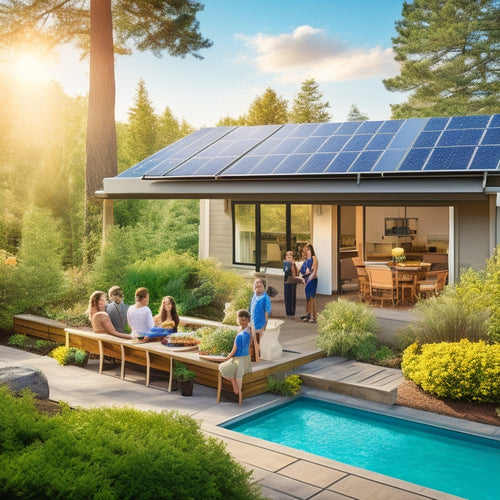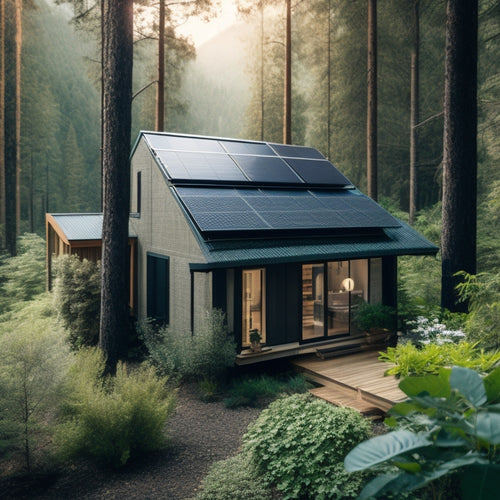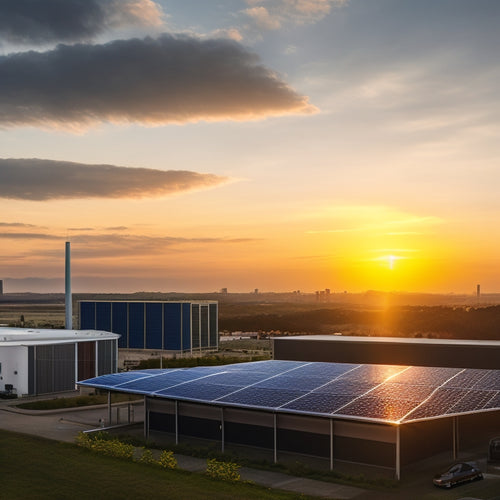
Key Features of a Mounting System for Outdoor Use
Share
When selecting a mounting system for outdoor use, focus on durability, stability, and ease of installation. Choose materials like aluminum or stainless steel to withstand harsh weather and prevent corrosion. Ascertain the design offers enhanced stability against wind with aerodynamic shapes and solid component connections. Look for innovative features that enable tool-free assembly and modular flexibility for quick adjustments. Finally, consider the weight capacity and safety margins to accommodate unexpected loads. By prioritizing these aspects, you can enhance performance and reliability, optimizing your outdoor setup for long-term effectiveness and durability. You might find even more essential observations ahead.
At a Glance
- Durability: Utilize high-quality materials like aluminum and stainless steel to withstand harsh weather conditions and enhance the longevity of outdoor mounting systems.
- Corrosion Resistance: Implement corrosion prevention techniques such as galvanization and regular inspections to maintain the integrity of the mounting system over time.
- Wind Resistance: Design with aerodynamic shapes and reinforced connections to improve stability and minimize the risk of structural failure in windy conditions.
- Innovative Design: Focus on tool-free assembly and modular flexibility for easy installation, allowing customization and adaptability to unique outdoor configurations.
- Safety Considerations: Assess weight capacity and include safety margins to ensure the mounting system can withstand unexpected loads and environmental factors.
Durability Against Harsh Weather
When selecting a mounting system for outdoor use, you must consider the material's resistance to various weather elements.
High-quality solar panel roof mounting kits guarantee secure installation and prevent system failures in harsh conditions.
Understanding corrosion prevention techniques is essential to guarantee longevity and performance in harsh conditions.
Material Resistance to Elements
Durability is a critical factor in selecting a mounting system for outdoor use, particularly in environments exposed to harsh weather conditions. The right material selection can greatly influence the longevity and reliability of your system. When choosing materials, consider their resistance to elements like UV radiation, rain, snow, and extreme temperatures. These factors can affect both performance and the environmental impact of your installation.
Here's a quick overview of common materials used in outdoor mounting systems and their resistance to various elements:
| Material | Weather Resistance | Environmental Impact |
|---|---|---|
| Aluminum | High | Low |
| Stainless Steel | Moderate | Moderate |
| Fiberglass | High | Low |
| Galvanized Steel | Moderate | High |
| Plastic | Low | Low |
Selecting materials with high weather resistance and low environmental impact guarantees your mounting system not only withstands the elements but also contributes positively to sustainability. Remember, effective material resistance is about balancing performance with ecological considerations. By prioritizing durability, you enhance your outdoor installations to thrive through the seasons.
Corrosion Prevention Techniques
Corrosion can greatly compromise the integrity of outdoor mounting systems, making effective prevention techniques vital. To guarantee durability against harsh weather, you'll want to implement sturdy coating methods.
These include galvanization, where a protective zinc layer shields the metal from moisture and oxygen, and powder coating, which creates a thick, durable finish resistant to chipping and fading. Both methods considerably extend the lifespan of your mounting system.
In addition to coating methods, establishing rigorous maintenance practices is essential. Regular inspections will help you identify early signs of corrosion.
Clean the surfaces periodically to remove debris and contaminants that can trap moisture. If you notice any wear, touch up the coatings promptly to prevent corrosion from taking hold.
You might also consider using sacrificial anodes in environments with high salinity or humidity. These anodes corrode preferentially, providing an additional layer of protection for your mounting systems.
Enhanced Stability in Wind
When designing a mounting system for outdoor use, you must prioritize wind resistance to guarantee stability.
Utilizing advanced materials, such as stainless steel and anodized aluminum, enhances durability, allowing the structure to withstand strong gusts without compromising integrity.
Design for Wind Resistance
To guarantee stability in windy conditions, the design of an outdoor mounting system must incorporate specific features that counteract the forces exerted by gusts. One of the primary considerations is the use of aerodynamic shapes. By creating components that minimize wind resistance, you can considerably reduce the likelihood of structural failure.
For instance, streamlined profiles allow wind to flow smoothly over the surface, preventing turbulence that could destabilize the system.
Additionally, achieving ideal angles in your design is essential. When mounting surfaces are tilted appropriately, they can deflect wind more effectively, reducing the pressure exerted on the structure. An angle that aligns with prevailing wind directions can enhance the overall stability of the system.
You should also consider the distribution of weight within the mounting system. A lower center of gravity can contribute to resistance against tipping in high winds.
Reinforced connections between components are vital, as they help maintain structural integrity under stress. By focusing on these design elements, you'll create a mounting system that stands strong against the forces of nature, allowing you the freedom to employ outdoor spaces without fear of instability.
Materials for Durability
Even with a peak design for wind resistance, the choice of materials plays a significant role in guaranteeing the durability and stability of an outdoor mounting system.
You'll want to select materials that can withstand harsh weather conditions while remaining lightweight and strong. Aluminum and high-grade stainless steel are excellent choices, offering corrosion resistance and strength, vital for resisting wind forces.
Consider eco-friendly options like recycled composites or sustainably sourced woods that not only perform well but also align with environmentally conscious values.
These materials can provide a balance between performance and sustainability, enhancing your system's appeal.
Material sourcing is equally important.
Verify your suppliers adhere to responsible practices, promoting longevity and reliability.
This not only reduces your carbon footprint but also supports the stability of your mounting system in adverse conditions.
Innovative Design for Easy Installation
When you're installing the mounting system, you'll appreciate the tool-free assembly process that simplifies setup.
This innovative design not only streamlines installation but also enhances modular component flexibility, allowing you to adapt the system to various outdoor configurations. By minimizing the need for additional tools, you can greatly reduce installation time and effort.
Additionally, many leading brands offer customizable solutions that can be customized to meet specific project needs, ensuring compatibility with unique structural features.
Tool-free Assembly Process
Many users appreciate the convenience of a tool-free assembly process, which simplifies installation and minimizes setup time. This innovative design eliminates the need for assembly tools, allowing you to focus on getting your mounting system operational without the hassle of finding and using tools.
This approach offers significant user-friendly features, enhancing your overall experience.
| Feature | Benefits |
|---|---|
| Quick Connect Mechanism | Instantly locks components in place |
| Modular Design | Easily adapts to various setups |
| Lightweight Components | Reduces strain during installation |
With a tool-free assembly process, you're enabled to set up your outdoor equipment quickly, freeing you to enjoy your space without unnecessary delays. This streamlined method not only saves time but also reduces the complexity typically associated with installation. You can achieve a sturdy and secure mounting system confidently, knowing that you've chosen a design that values your freedom and efficiency. By focusing on intuitive mechanisms, this assembly process aligns with your desire for simplicity and effectiveness in outdoor setups.
Modular Component Flexibility
Modular component flexibility is a key feature of the mounting system, allowing you to customize your setup effortlessly. The modular design enables you to adapt various components to meet your specific needs, ensuring that you can configure your system for different outdoor environments.
With component interchangeability, you can easily swap parts without needing specialized tools or additional hardware, promoting a seamless installation process. This flexibility enables you to respond to changing requirements or preferences quickly.
For instance, if you decide to upgrade your equipment or change the orientation of your setup, you can adjust the configuration without major disruptions. The ability to mix and match components not only enhances your setup's functionality but also satisfies your desire for freedom in design.
Moreover, the modular nature of the system supports scalability, allowing you to expand or modify your installation as your needs evolve. By investing in a mounting system that prioritizes modular component flexibility, you're ensuring that your setup remains adaptable and efficient, ultimately maximizing performance in outdoor applications.
Welcome the innovative design that prioritizes your freedom to create a personalized, effective mounting solution.
Selecting Based on Weight Capacity
When selecting a mounting system, you must first determine the total weight of the equipment you'll be using.
It's vital to take into account safety margins to make certain the system can handle unexpected loads or environmental factors.
Additionally, understanding the essential components for off-grid systems can help inform your mounting choices, as these systems often require strong installations.
This approach not only assures stability but also enhances the longevity of your installation.
Determine Equipment Weight
Selecting the right mounting system for outdoor use hinges on understanding the weight capacity of your equipment. Start by conducting a thorough load assessment. This involves determining the total weight of the equipment you plan to mount, including all components and accessories. Be precise; even minor discrepancies can lead to inadequate support.
Next, consider weight distribution. How the weight is spread across the mounting system affects its performance. An uneven distribution can lead to stress on certain points, increasing the risk of failure. You'll want to make certain that the mounting system can accommodate both the total weight and the distribution pattern of your equipment.
Once you've gathered this information, compare it to the specifications of potential mounting systems. Verify the weight capacity exceeds your total weight to allow for any additional gear or unforeseen factors that may come into play.
Consider Safety Margins
Understanding safety margins is essential when choosing a mounting system based on weight capacity. These margins guarantee that your system can withstand unexpected loads without compromising safety. Safety standards dictate that you consider not just the equipment's weight but also any additional forces it may encounter, such as wind or seismic activity.
To make informed load calculations, you must assess the total weight your mounting system will support and then apply an appropriate safety factor, typically ranging from 1.5 to 3, depending on the application. Here's a simple table to help you visualize the relationship between weight capacity and safety margins:
| Weight Capacity (lbs) | Recommended Safety Margin |
|---|---|
| 100 | 150-300 |
| 200 | 300-600 |
| 300 | 450-900 |
Cost-Effective Long-Term Solution
When selecting materials for your outdoor mounting system, consider durability as a key factor in long-term cost savings.
Choosing strong materials can greatly reduce maintenance and replacement costs over time.
Durable Materials Selection
For outdoor mounting systems, choosing durable materials is crucial to confirm long-term performance and cost-effectiveness. You need to evaluate material compatibility with environmental conditions to ascertain stability and longevity. Selecting the right materials also minimizes environmental impact, aligning with sustainable practices while meeting your needs.
| Material Type | Considerations |
|---|---|
| Aluminum | Lightweight, corrosion-resistant, recyclable |
| Stainless Steel | High strength, corrosion-resistant, longer lifespan |
| Composite Materials | UV resistance, low maintenance, environment-friendly |
When evaluating materials, focus on their ability to withstand harsh weather, UV exposure, and temperature fluctuations. Aluminum, for instance, offers a favorable strength-to-weight ratio and resists corrosion, making it an ideal choice for many applications. Stainless steel provides exceptional durability, suitable for heavy-duty installations. Composite materials are also an excellent option, offering a balance of performance and reduced environmental impact.
Frequently Asked Questions
What Materials Are Commonly Used in Outdoor Mounting Systems?
When selecting materials for outdoor mounting systems, you'll find aluminum and stainless steel are preferred for their corrosion resistance. Incorporating effective installation techniques guarantees durability, allowing you to maximize performance and freedom in various environments.
How Do I Maintain My Mounting System for Longevity?
To guarantee your mounting system thrives, follow installation tips closely and establish a routine maintenance schedule. Regular checks and timely adjustments will keep it performing well, allowing you to enjoy the outdoors without worry.
Can These Systems Be Customized for Specific Installations?
Yes, you can customize these systems for your specific installations. With custom design and installation flexibility, you'll guarantee ideal performance and adaptability, allowing you to meet unique requirements and maximize the system's effectiveness in various environments.
What Safety Features Should I Look for in a Mounting System?
When evaluating safety features, you should prioritize load capacity and adherence to installation guidelines. Ensuring these factors will help you achieve a secure setup, allowing you the freedom to enjoy your outdoor space confidently.
Are There Any Warranties Available for Outdoor Mounting Systems?
Think of warranties as safety nets for your investment. You'll find various warranty durations, often covering defects, and many manufacturers offer installation support to guarantee your system's set up securely and effectively for outdoor conditions.
Explore More
When choosing a mounting system for outdoor use, you can't afford to overlook key features like durability, stability, and ease of installation. Each decision you make impacts not just the performance but the longevity of your setup. Imagine facing a storm, your system holding strong while others falter. You have the power to guarantee your investment is cost-effective in the long run. Will you take the leap and secure your outdoor setup with a system designed to withstand the elements?
Related Posts
-

Top-Rated Home Solar Power Kits for Achieving Energy Independence
Top-rated home solar power kits enable you to achieve energy independence by greatly cutting your energy costs. You c...
-

Off Grid Solar Batteries
As you shift to off-grid living, you'll rely on high-performance solar batteries to store excess energy generated by ...
-

Advantages of Commercial Solar Battery On-Site Storage
By investing in a commercial solar battery on-site storage system, you can greatly reduce your energy grid dependence...


